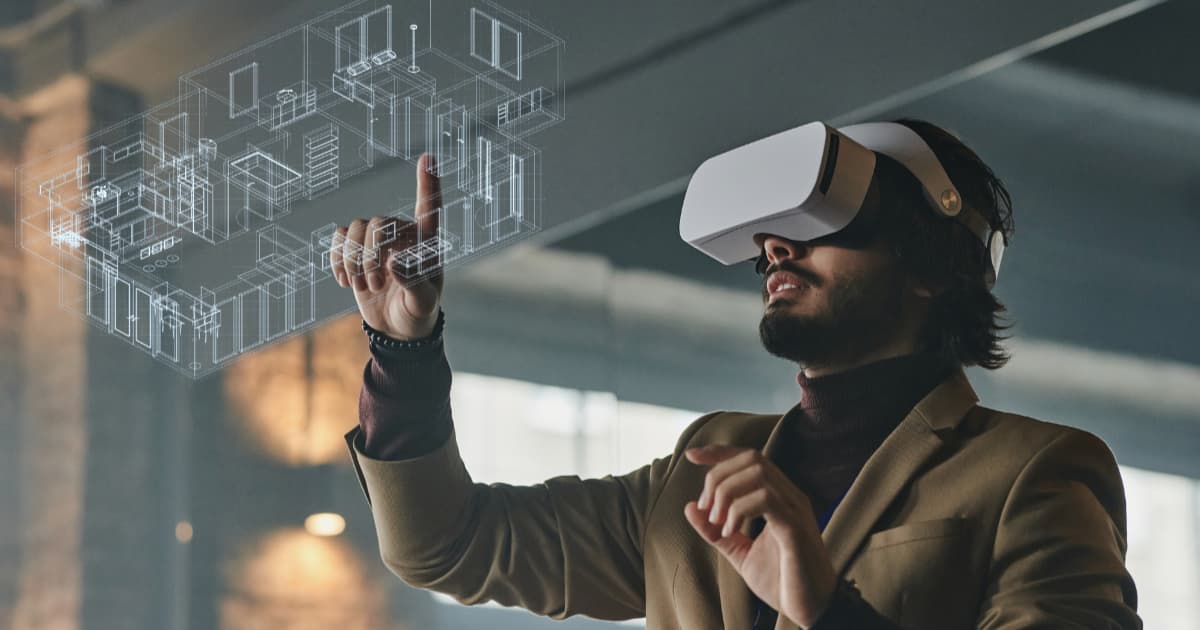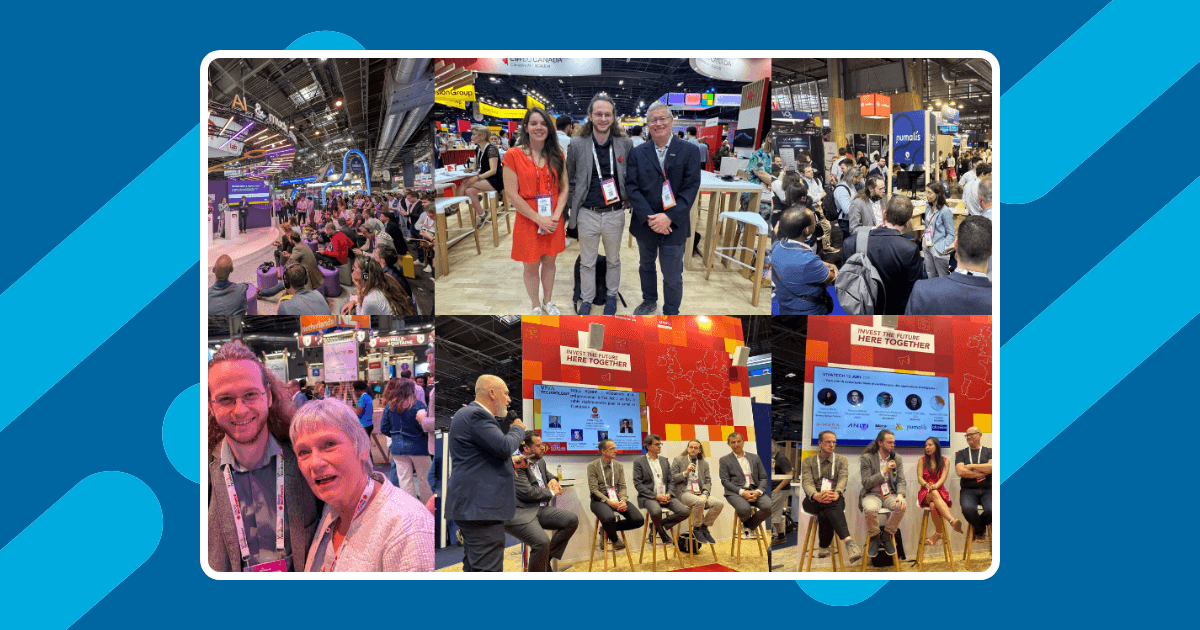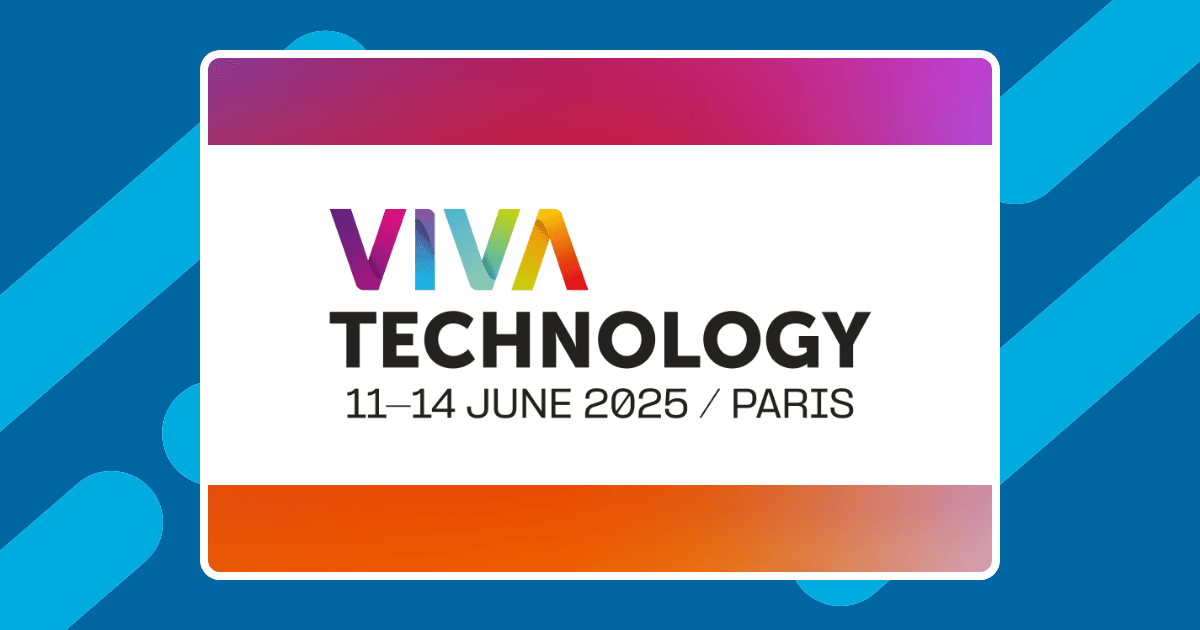Real estate technology significantly impacts how we buy, sell, and interact with property.
Artificial intelligence(AI) leads the pack, offering innovative ways to optimize tasks and processes. For instance, AI-powered property valuation solutions help valuers generate accurate property estimates quickly. Smart property management tools also help property managers cut down on the time they spend tackling repetitive tasks.
However, AI does not work in isolation. Integrating AI with technologies like the cloud, big data, virtual reality(VR), and augmented reality(AR) is ushering in a new era of possibilities.
Virtual tours allow buyers to walk through the property without a physical visit. Goldman Sach estimates that virtual reality in real estate could hit $2.6 billion by 2026.
VR/AR is the primary technology property marketers use for virtual viewing. However, integrating AI is opening up new ways to experience property. This article explores the possibilities available by incorporating AI with VR/AR, as well as the benefits and challenges.
Virtual Reality in Real Estate
3D virtual tours give users an interactive and immersive way to explore a property. They combine 360-degree property images, audio, and text to make engaging media that can be viewed on smartphones and PCs.
Virtual tours are successful and impactful because they engage buyers in ways words and photos cannot. They have gained widespread adoption, and their effectiveness cannot be understated.
Statistics show that 77% of prospective buyers prefer using virtual reality to view properties remotely.. Additionally, 65% of homeowners believe that VR tours contribute to a better understanding of property layout1.
AI in virtual tours: Applications in Real Estate
AI-driven solutions are augmenting the way virtual tours are made. It can be leveraged to create even more immersive experiences and high-quality images.
AI virtual staging
Real estate agents working with buyers affirm that home staging significantly influences prospective clients. According to a US study by the National Association of Realtors, 81% of these agents confirmed that home staging helps homebuyers visualize a property as their future residence2.
AI Virtual staging leverages advanced algorithms and rendering techniques to populate empty rooms with visually appealing presentations. Machine learning(ML) algorithms can analyze images of staged homes and recommend how to visualize other spaces. Such solutions can furnish the space and enhance the decor.
Using image recognition techniques, the ML model can determine textures, patterns, furniture, and recognize objects. To create a visually appealing representation, the solution considers different aspects, including room measurement and analysis, image enhancement, furniture selection and placement, and lighting. Finally, the output is edited, refined, and rendered to the prospective client3.
AI-driven virtual tours
Personalized virtual tours: Real estate virtual tours can take on a linear format, providing a rigid property tour lacking user consideration. However, ML algorithms can analyze personal preferences and interests to determine what users desire to see. Pattern recognition techniques can identify the time spent on different elements by determining user interactions within VR tours4.
The AI-based VR solution can highlight to homebuyers areas of interest to create more engagement.
This promotes hyper-personalization and avoids a one-size-fits-all approach that may not resonate with all users. For instance, a tech-savvy homebuyer would likely be interested in smart home features. An AI-powered virtual tour can focus on advanced systems of a home to encourage more engagement5.
Answering queries: In addition to visually immersive tours, an AI-powered solution can increase interactivity by providing information in real-time and on demand. For instance, during a house tour, a prospective client might be curious about the dimensions of the kitchen. Instead of making a separate request, an embedded AI assistant can instantly provide feedback.
AI-enhanced blueprint presentations: Before a master plan comes to fruition, marketers must produce highly visualized marketing material such as 3D models, concept homes, and blueprints to engage prospective buyers.
These methods have different limitations, often failing to allow clients to appreciate the yet-to-be-constructed property fully. Integrating AI and VR/AR refreshes how users view and interact with under-construction properties. The solution could allow potential buyers virtual walkthroughs, acting as a preview of the property. AR would allow the solution to overlay aspects like lighting and even furniture placements.
Companies like REimagineHome are offering AI-powered solutions for exterior rendering. Buyers can instantly preview under-construction exteriors, helping make informed decisions and personalize the exterior facade6.
Enhanced outdoor property view: AI-powered 3D designs integrate VR/AR, allowing users to explore outdoor spaces virtually. These tools employ computer vision, image recognition techniques, and advanced ML algorithms to formulate realistic views.
Generating floor plans: Floor plans help homebuyers understand the layout of the property. It is possible to create and enhance floor plans using computer vision and deep learning algorithms.
AI-powered rendering can generate visually enhanced and informative plans by adding lighting, color, and labels. The resulting renders can be provided to prospective buyers through VR tools.
Benefits and Challenges of AI and VR Synergy in Real Estate
Combining AI and VR in developing virtual tours benefits real estate professionals and homebuyers in many ways. However, challenges still persist that limit the adoption of this technology.
Benefits of integrating AI and VR for real estate
Enhanced accessibility: AI-powered virtual reality enhances remote viewing capabilities, allowing buyers and agents to view properties regardless of physical barriers. These tours increase the client base for properties since prospective clients globally can access the property from their homes.
Powerful customization: These tours are more immersive and interactive, presenting the client with visually realistic walkthroughs. Buyers can experience different layouts and design options for the property. Additionally, AI’s ability to personalize data goes a long way in helping shape these experiences, enabling agents to drive more engagement.
Cost-effectiveness: Compared to traditional techniques, AI-powered virtual staging saves costs. Typically, conventional staging methods involve physically placing furniture and decor, transporting, and hiring professionals. AI-driven staging software eliminates the need for physical objects, making this a less expensive method of showcasing property.
Time-efficient: Physically staging a property can be time-consuming and require coordination between multiple parties. AI-powered virtual staging and virtual tours can be set up within days, allowing agents to list properties quickly.
Challenges and considerations
Ethical concerns: AI-powered solutions offer many capabilities, ranging from design to personalization. Therefore, it’s easy to misrepresent the truth about the property, creating an inaccurate perception. It’s also vital to disclose to potential buyers that the tour is digitally staged to avoid misunderstandings later.
Skills and expertise: Combining AI and VR to create a working solution can be complex. This comes with a cost because the expertise needed to develop, deploy, and implement such solutions can be expensive. Additionally, a skills gap necessary to integrate processes and workflows properly limits the technology uptake.
Quality concerns: Advanced algorithms and softwares are used to develop AI-powered virtual solutions. Apart from technical difficulties and glitches, the solution can fail to deliver a high-quality presentation. This is especially true when the data used to build the AI solution is low quality.
Conclusion
Virtual property viewing using VR is a great way to showcase property. AI and ML can enhance VR tours, providing additional ways for personalization and immersion.
AI-driven virtual staging offers even more interaction, ensuring prospective buyers envision the property with furniture and decor. AI-driven virtual tours also promote engagement, personalizing the tour according to client preferences.
AI-driven property visualization offers a new dimension for selling and experiencing property listings. It promises multiple advantages, including enhanced accessibility and powerful immersion.
References
- Virtual Reality In Real Estate Statistics: Latest Data & Summary – WiFiTalents ↩︎
- Profile of Home Staging ↩︎
- Understanding AI Virtual Staging: A Comprehensive Guide | Virtualstaging.art ↩︎
- Shaping the future of virtual tours with artificial Intelligence ↩︎
- AI Personal Assistants and Virtual Tours: The Next Big Thing in Real Estate? – Rechat ↩︎
- Visualize Your Future Property With Exterior Structure Rendering ↩︎







